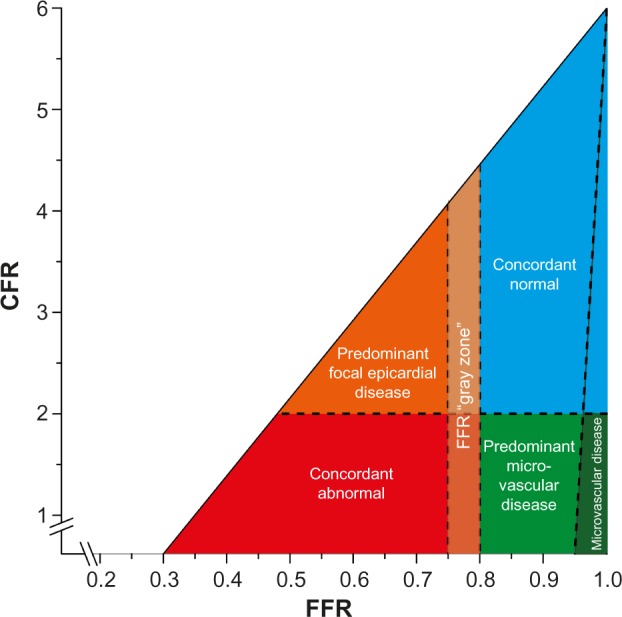Figure 4.

Conceptual plot of the fractional flow reserve (FFR)–coronary flow reserve (CFR) relationship.
Notes: Four main quadrants can be identified by applying the clinically applicable cutoff values for FFR and CFR, indicated by the dotted lines. Patients in the upper-right blue area are characterized by concordantly normal FFR and CFR, and patients in the lower-left red area are characterized by concordantly abnormal FFR and CFR. Patients in the upper-left orange area and lower-right light-green area are characterized by discordant results between FFR and CFR, where the combination of an abnormal FFR and a normal CFR indicates predominant focal epicardial, but non-flow-limiting, coronary artery disease, and the combination of a normal FFR and an abnormal CFR indicates predominant microvascular involvement in coronary artery disease. The small dark-green region in the lower right is characterized by an FFR near 1 and an abnormal CFR, indicating sole involvement of the coronary microvasculature. The FFR “gray zone” indicates the equivocal 0.75–0.80 FFR range. Copyright © 2015 by American Heart Association Inc. Adapted with permission from van de Hoef et al. van de Hoef TP, van Lavieren MA, Damman P, et al. Physiological basis and long-term clinical outcome of discordance between fractional flow reserve and coronary flow velocity reserve in coronary stenoses of intermediate severity. Circ Cardiovasc Interv. 2014; 7(3):301–311.38
